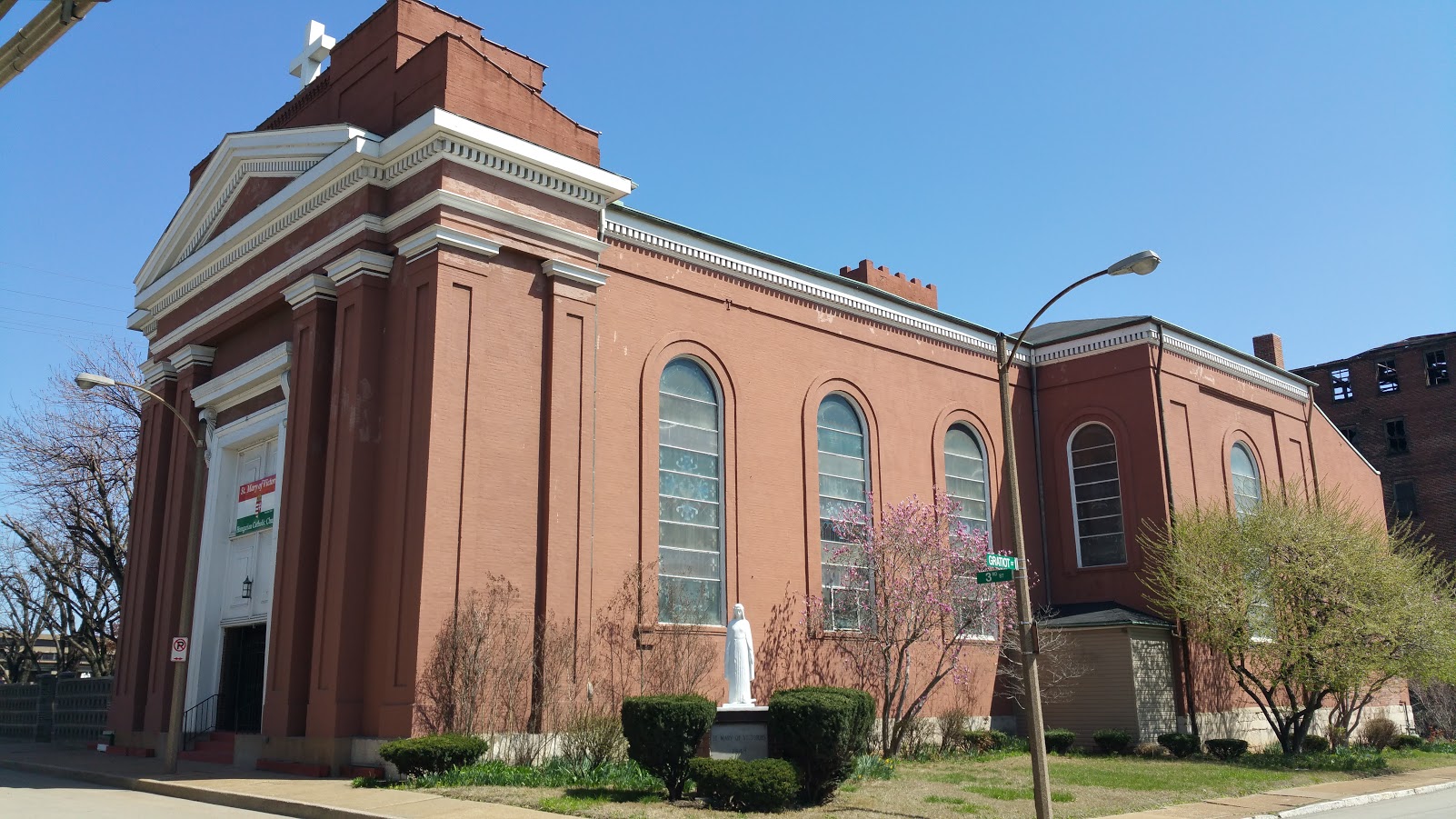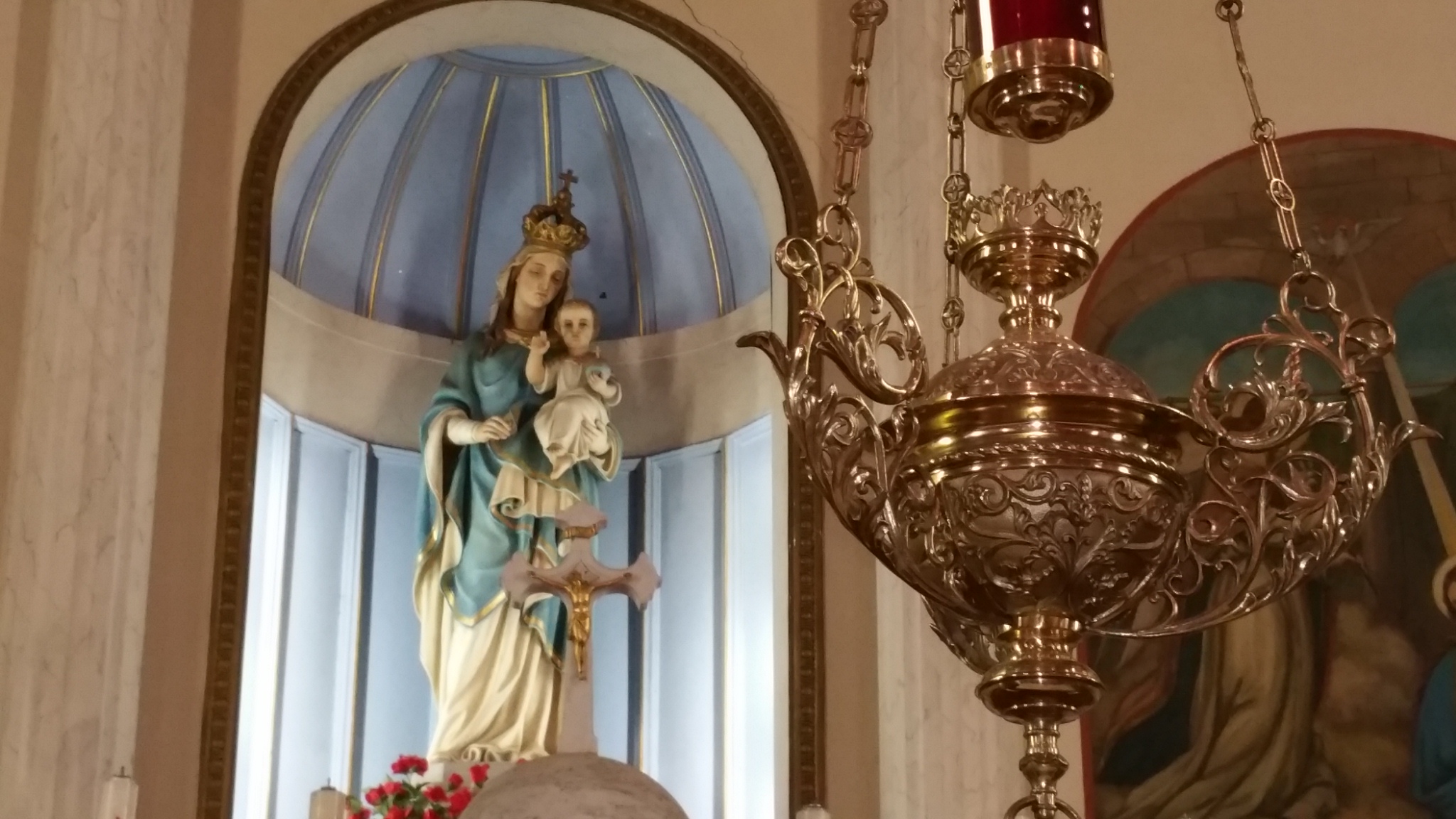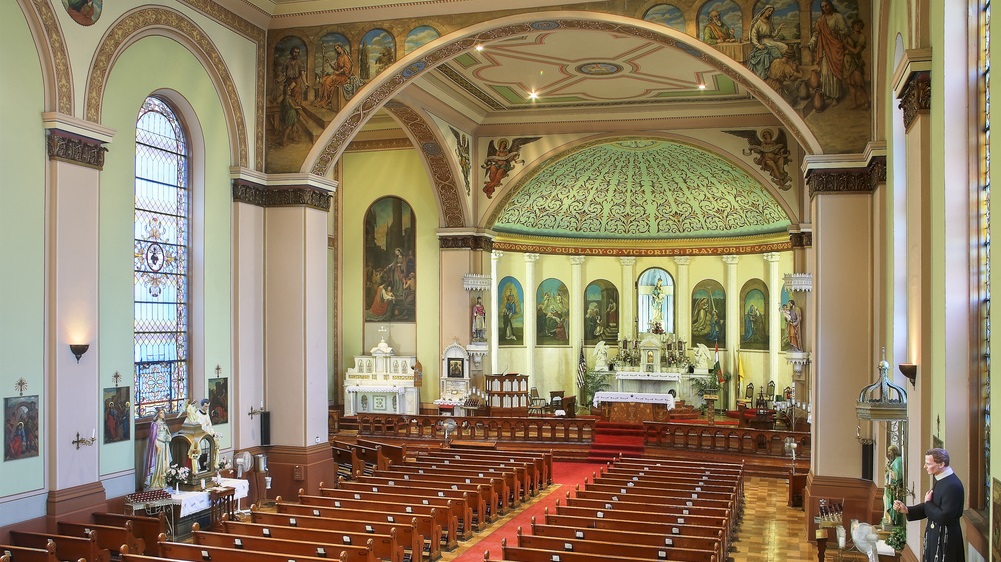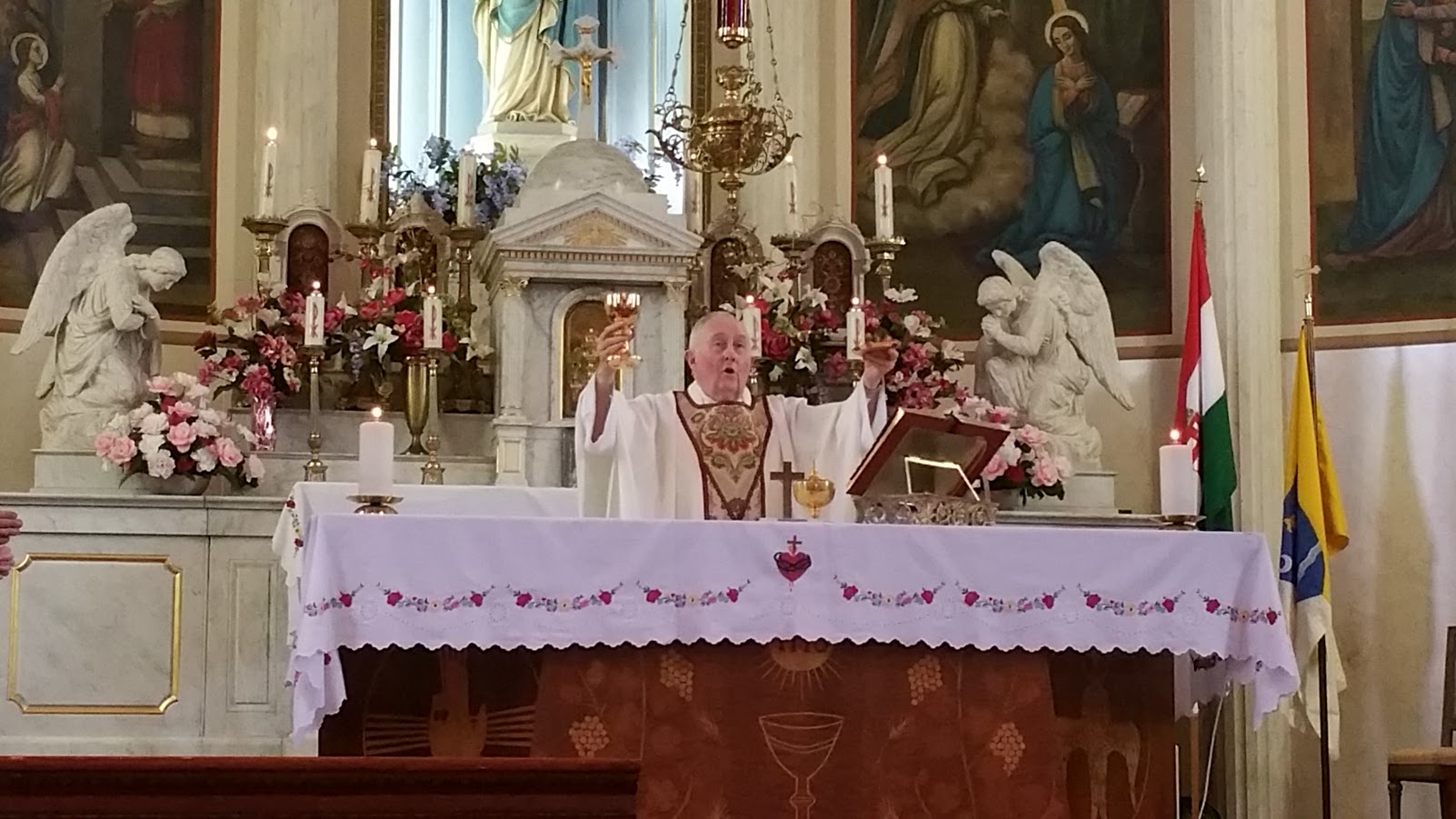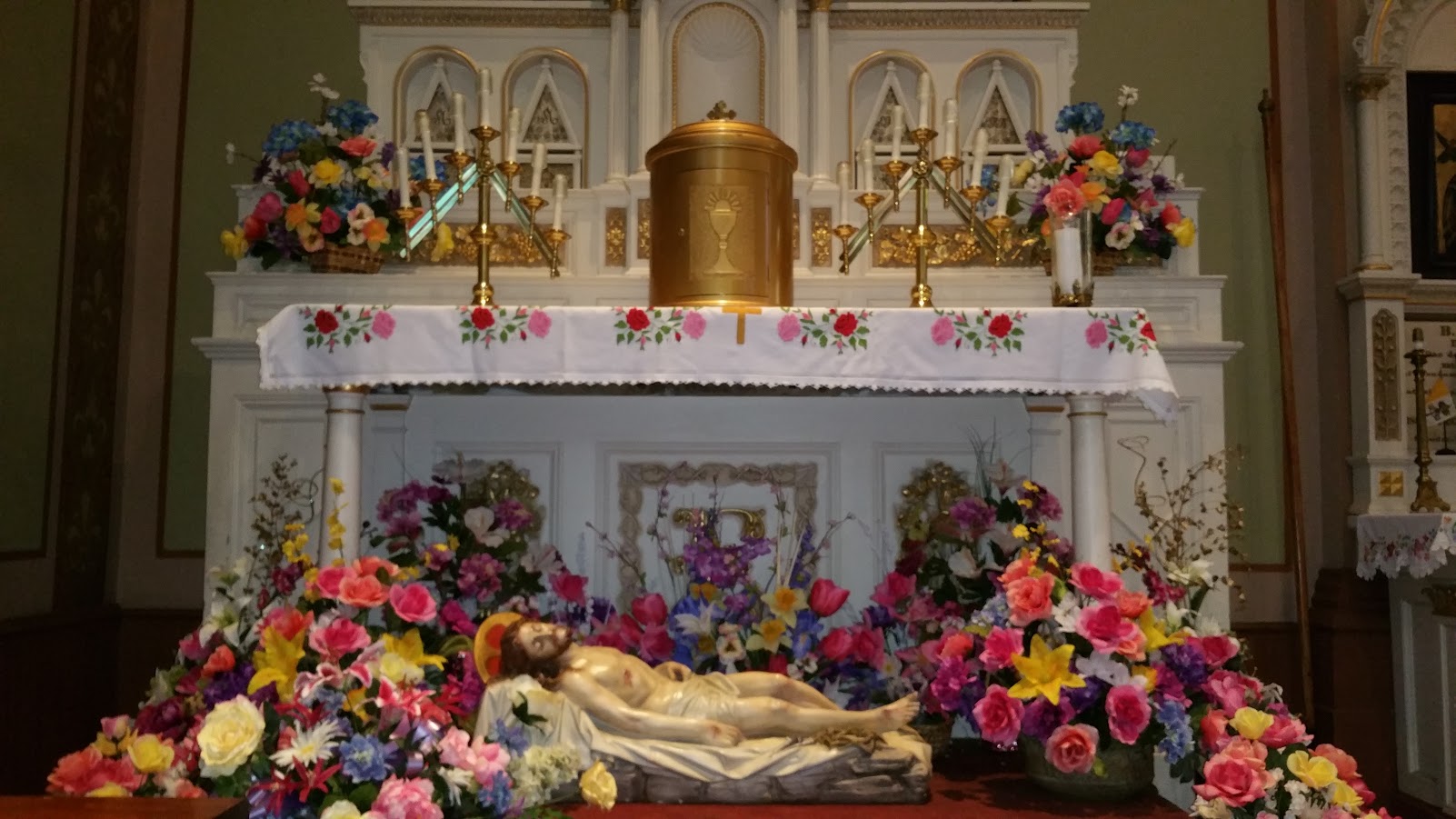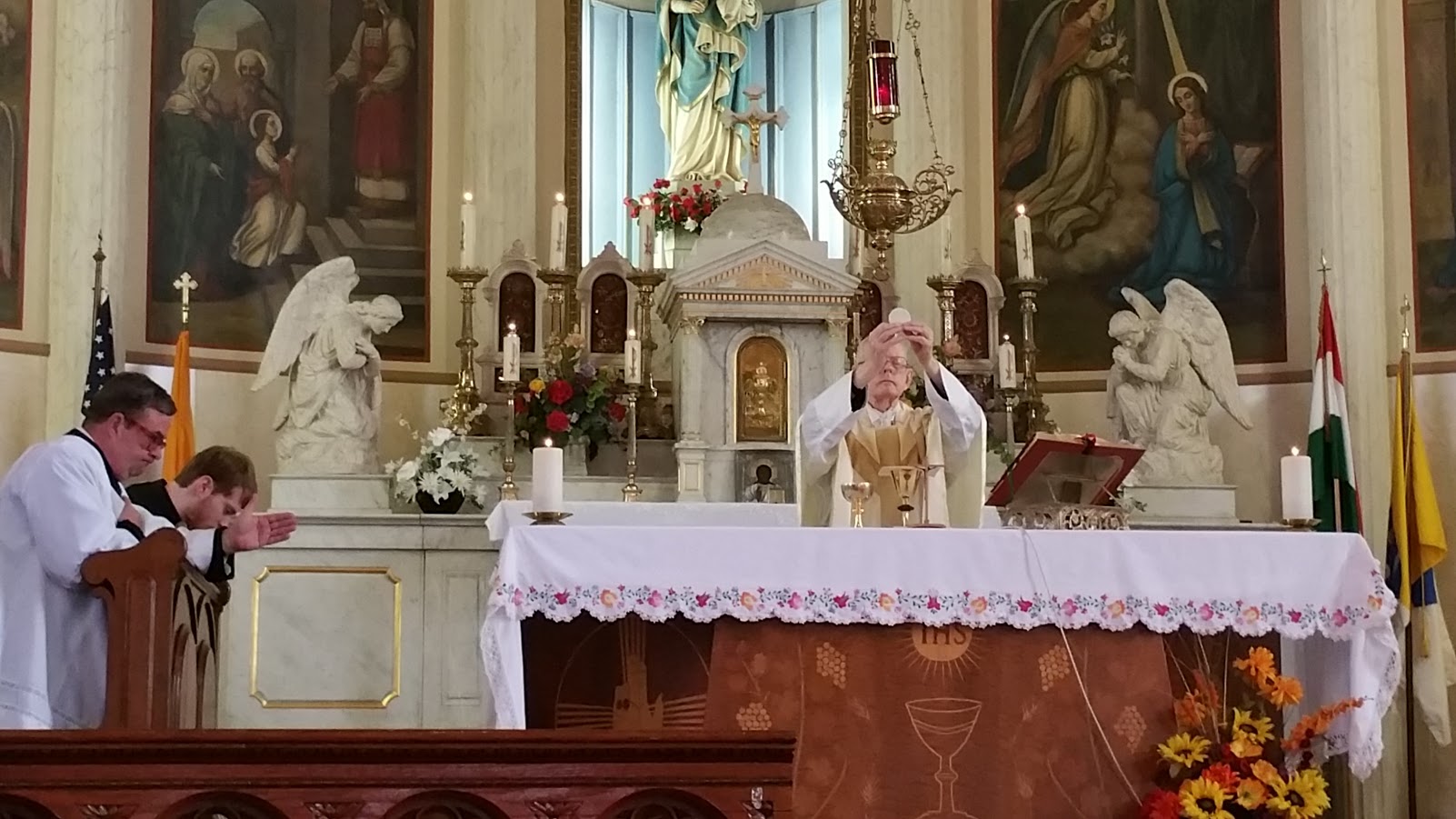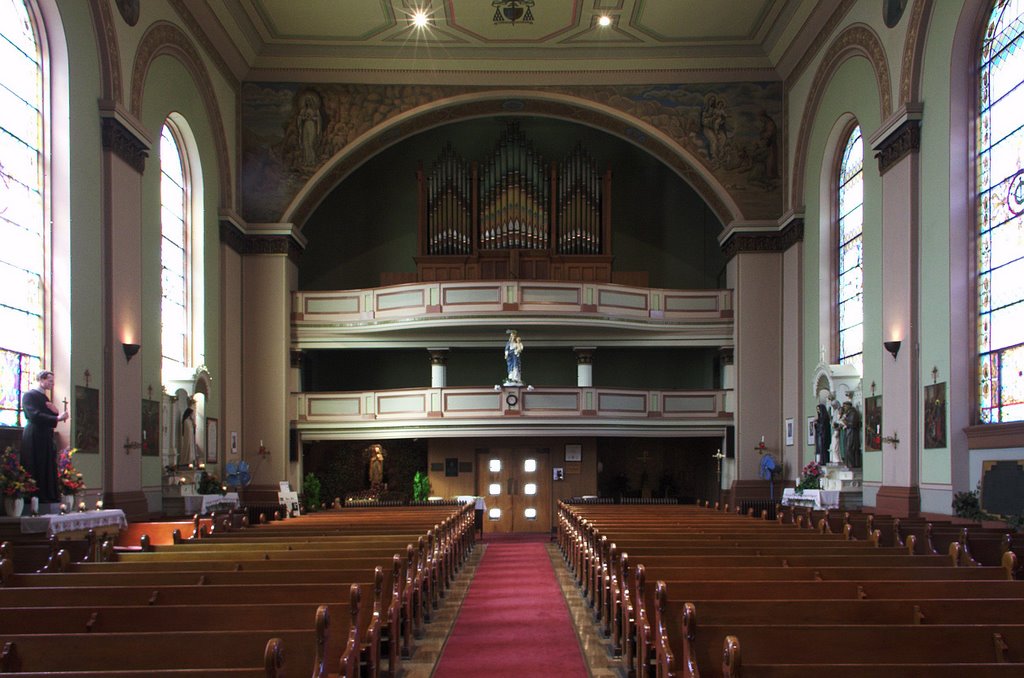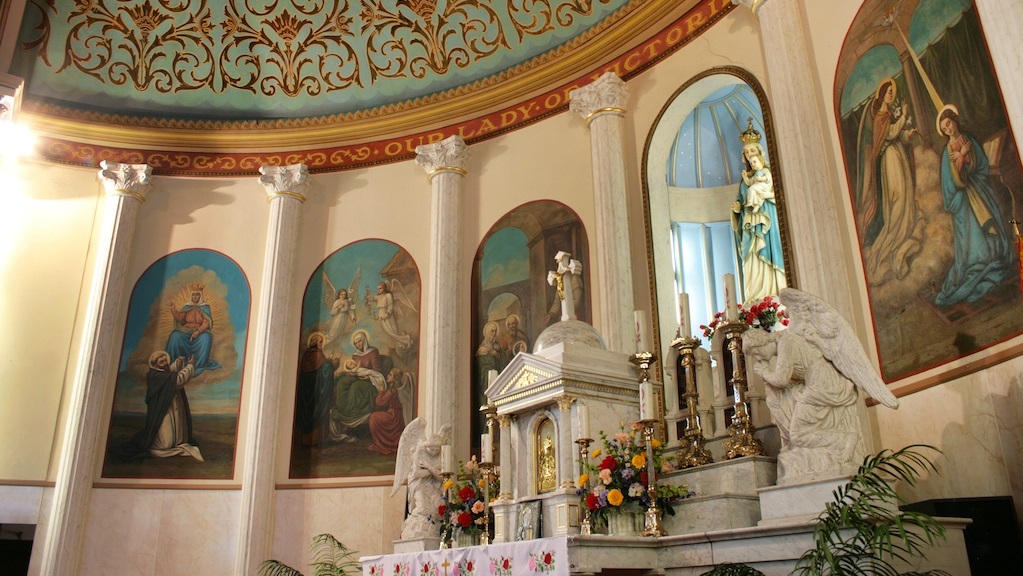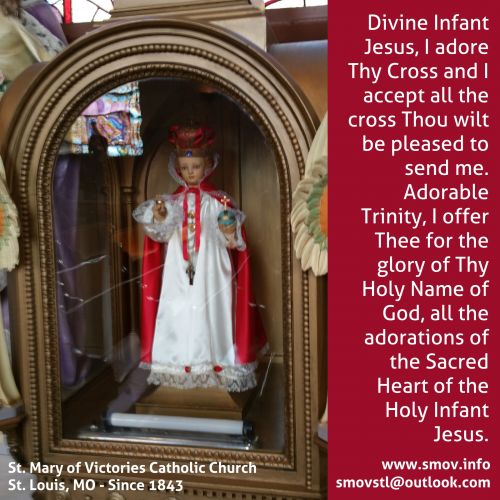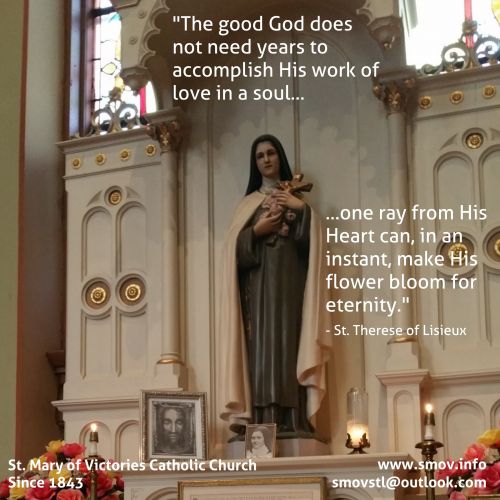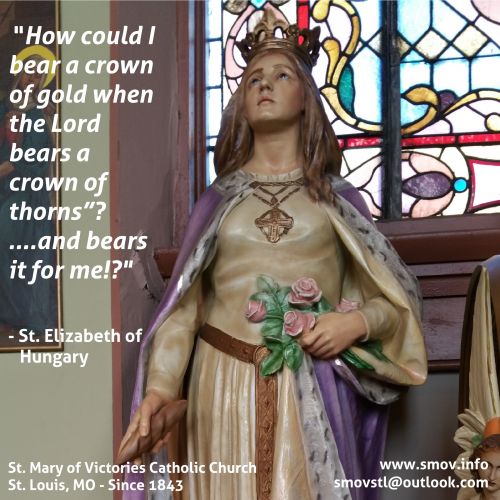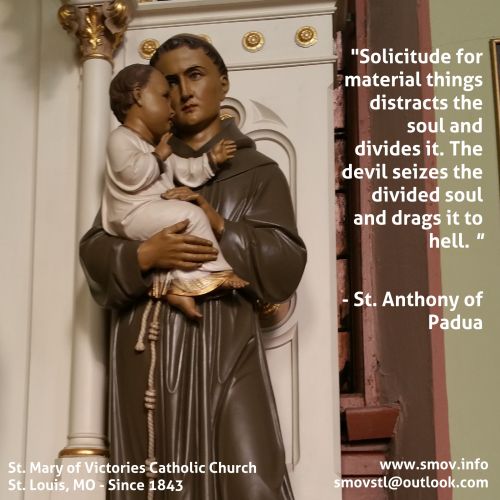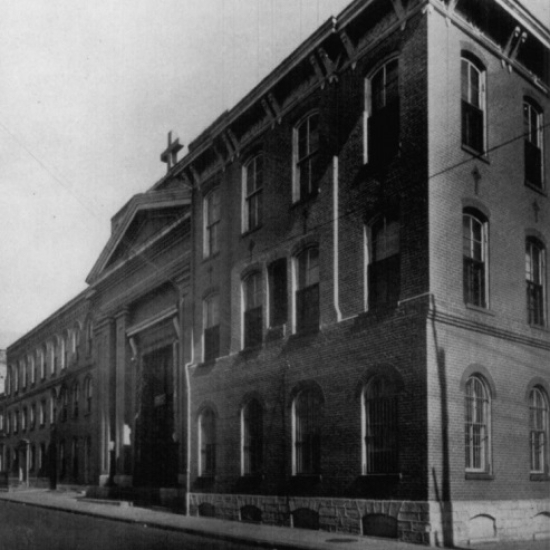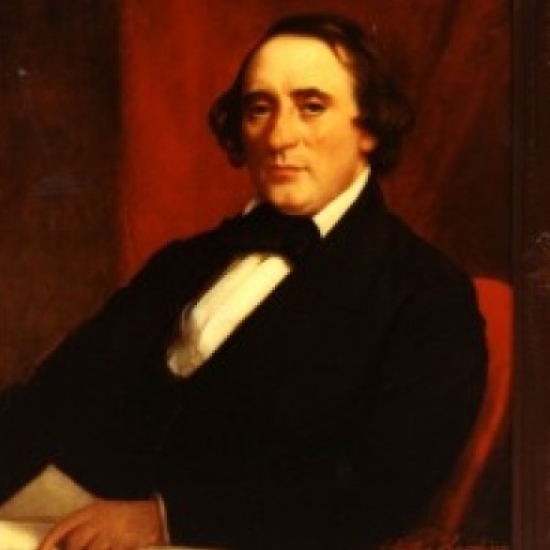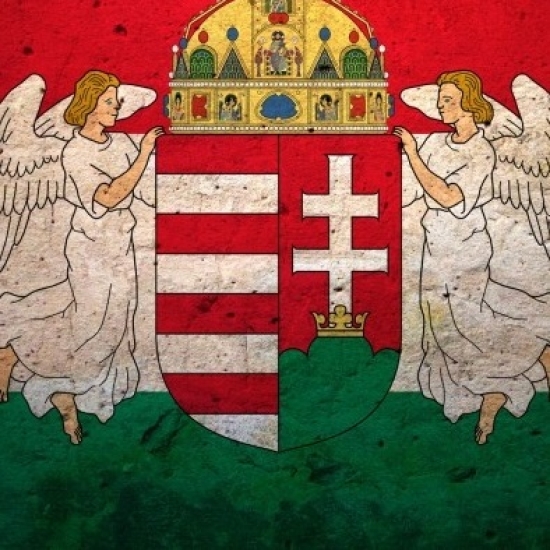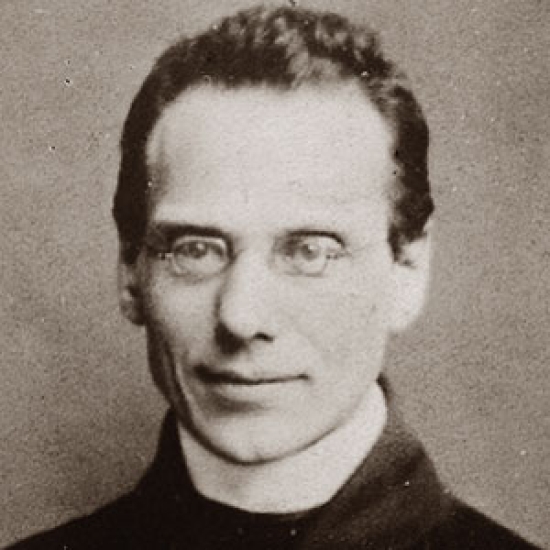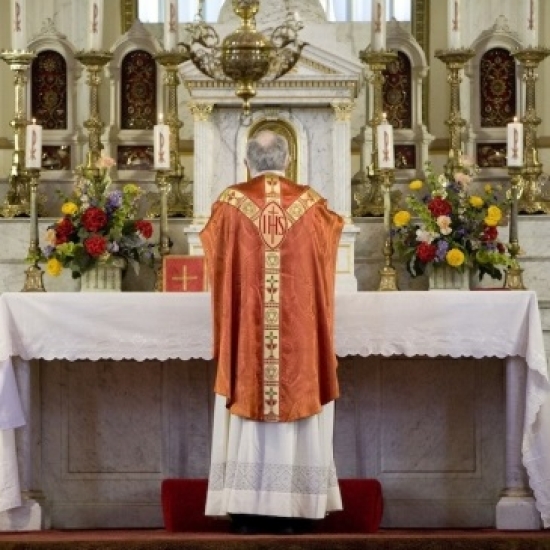23 December 2012, 4th Sunday of Advent (Year C)
Introit: Rorate, begin on B♭ (as do)
Offertory: O come O come Emmanuel, V2H p. 226, vv. 5-9.
Communion: Ecce virgo concipiet, begin on C (as re)
Post Communion: Ave Maria, begin on E♭ (as fa) [Today's Gregorian Offertory, but sung at this point in the Mass.]
Recessional: Alma Redemptoris Mater, PBC p. 119 (simple tone), begin on C (as do)
Ordinary from Mass XVII, PBC, p. 71. (If singing from Gregorian Missal, use Kyrie C.)
Credo I
The Introit antiphon has two phrases; it is short, so we will repeat the antiphon between the psalm verse and the GP.
1. Rotate caeli desuper, et nubes pluant justum:
2. aperiatur terra, et germinet Salvatorem.
Hebrew poetry is built on vivid images and similar and opposite thoughts places in parallel. Often the liturgical texts are a 'cut and paste' adaptation that doesn't let us see all of the poetic context for a given verse. The text here, however, gives us a fulsome example. The two halves of the verse (phrases 1 & 2 above) are in parallel, and the first and second half of each phrase are as well. So we have a classic set of parallels within a parallel.
Some commentators surmise that the word caeli, or the word desuper, which in late Latin was accented on the second syllable, precipitated the high pitch of the first half of the first phrase, just as terra influenced the low pitch of the second phrase. In any event, the wide range of emotions in waiting for the Messiah are expressed by the large intervals: Rorate has an ascending fifth, with a slight hold on the a. Although we wouldn't normally observe the vertical episema, the manuscripts support this one and it gives balance to the urgency of the plea in Rorate and caeli. Between desuper and et we have a descending fifth, and between nubes and pluant occurs an ascending interval of a fourth. They are also felt in the rapidly soaring melody and the powerful accents over caeli and (nu)-bes pluant ju-(stum). The melody echoes the undulating effect of rain falling to earth from the sky in response to our urgent plea.
In the second phrase, we hear the motif of terra repeated over (germi)-net. Treat the f on the first syllable of the first word as an upbeat, and contrast the groups of two notes in the first part with the three-note groups in the second part of this phrase. Up to germinet we have three groups of three notes and afterwards two more over Salvatorem—a representation of energetic sprouting and blossoming. The group a b c g over aperiatur corresponds to d e a d over Salvatorem.
For the Israelites the concept of cloud had a history of deep meaning: in the column of cloud God led His people through the desert; veiled by clouds He manifested Himself to them on Sinai; in a cloud the glory of the Most High descended upon the Temple of Solomon. Clouds are the symbol and the containers of life-giving rain, as well as of the grace of redemption which comes down to us from the heights of heaven, and of all the benefits and glories of the new kingdom of the Messiah. When these clouds open, new life will bud forth (germinet) in Nazareth, a life of unusual beauty, rich in blossoms and fruits.
The Communion antiphon has two phrases.
1. Ecce virgo concipiet, et pariet filium
2. et vocabitur nomen ejus Emmanuel
This Communion has many echos of that of the first Sunday of Advent: the same mode, the same range, the same divisions, an arsis-movement in the first phrase resting on the dominant, then a thesis-movement in the second phrase. Both over benignitatem and pariet we find the use of a five-step scale with no semitones (pentatony). But with this Communion Ecce virgo, we have a descending fourth over virgo, g-d, and a fourth higher over pa-(riet), d-a; then an ascending fourth over et vo-(cabitur), g-c-c. In pariet filium, the melody echoes the high pitched cry of a woman in the pangs of childbirth, then goes on to settle quietly as we contemplate the awesome & wonderful reality of who this child is: emmanu-El. God is with us.
Here is two (lengthy) commentaries on today's Offertory, with further cultural commentary below:
Dom Dominic Johner's comments:
This Ave Maria belongs to the most beautiful creations of plain song. Here we have reverence and wonderment, tenderness, astonishment, and love. The melody sinks into the deep with gratia, tecum, fructus; then it rises slowly with Ave, gratia, ventris; again it floats on high with Maria. It grows more ardent (benedicta tu); then it expresses profound emotion and humble obeisance, while over all the song there hovers an ineffably sweet joy. Thus the Archangel Gabriel may have prayed the first Ave Maria; perhaps in his mind's eye he looked into the coming centuries, and perceived in millions of human hearts what Mary would mean to them, what blessings and what happiness the most blessed among women would bring upon this earth. No one can portray this adequately, but we get an inkling of it if we let the present melody penetrate into our hearts.
Over Ave the passage f a f g f e is soon followed by the very similar f a f g a g. After the upbeat over the first note of Maria, the grouping of the neums here given suggests a division into two-note groups: a cc cc\ cagf\ gaca\ fgg; this, though serene in effect, resembles a trembling with holy joy. The two bistrophas, naturally, are to be sung with a very light swing. Plena is made prominent by its pressus, the first in this piece. We do not find the passage Dominus tecum in the early manuscripts; its melody is found in the Offertory-verses Posuisti and Angelus over the words gloria and stetit respectively (cf. Monday in Easter Week). With some variations, this style of singing the verses was adapted to the text of the Offertory Beata es, which is now sung on September 8 and on some other feasts. Here the melody occurs over the word virgo. The second member is a repetition of the first. The brilliant phrase benedicta is characterized by its high pitch and by repeated and impressive accents: c d e e-c d d c-c d a a g-g c c b; then by the fourths d-a, g-c, a-d. These accents are still active in the last phrase: f g a a g, g a f f e , and g a a gg.
We find Mary, the Virgin Mother of God, prominent in the liturgy of Advent. On the first Sunday of Advent we were led to her greatest shrine in Rome: Saint Mary Major. The vigil of Christmas will most appropriately find us there again, and in the Missal, heading the Midnight Mass, we find these words: Station at Saint Mary Major, at the Crib. In the Divine Office for this time we find many a delicate and charming allusion to her exalted dignity. And the closer we come to the feast of Christmas, the more frequently the chants ofthe Mass mention her. Thus today we sing to her the Ave Maria.This blessed one is bearing in her womb the Child that is God: Dominus tecum. Just as mother and child form a unity, so the Son of God has become one with Mary. He is with her, in her, belongs to her, even though He is the Lord whom she adores. But she wishes to present Him to us for the salvation of the world. Therefore do we call thee blessed, 0 glorious Virgin. Deborah and Judith were praised for delivering their people from dire distress; but thou hast turned mankind's curse into a blessing, and from thee flow streams of grace which shall carry us into a blissful eternity. Ave Maria!
Dr. William Mahrt (Stanford U) comments:
The sources of the “Hail Mary”, often called the “Angelic Salutation,” are not only the words of the Archangel Gabriel. The Gospel of St. Luke tell us that the first phrase “Ave Maria, gratia plena, Dominus tecum,” consists of the words of Gabriel at the Annunciation. The following words, however, are those of Elizabeth at the Visitation, “Benedicta tu in mulieribus, et benedictus fructus ventris tui.” The composer of this offertory most likely was quite aware of these differences, since the melody makes a clear distinction in range between the two messages. Gabriel’s words form the first half of the piece, marked by a colon. Elizabeth’s words form the second half, beginning with an expansion of the range, representing the female voice by higher pitches, at least at the beginning.
The piece is in mode eight, which has an interesting pitch structure. The main strong notes of the system, regardless of mode, form what is called a chain of thirds: A-C-D-F-a-c-e. (Capitals are the pitches A–G completely below middle c; lower-case letters represent a–g which surround middle c; doubles represent the sequence of pitches aa–ee entirely above middle c; these are the medieval designations commonly identified with Guido of Arezzo.) Mode eight has a final of G, which is not one of the strong notes, and a reciting tone of c, which is a strong note. The result of is that a frequent melodic figure in this mode is the triad below the reciting note, F–a–c, and some of the most interesting melodic action is between this chain of thirds and the G final.
Thus Ave Maria begins with a figure on “Ave” centering first upon F–a, then, moving through G–E, the triad D–F–a, leading to G. The G–E third leads down to the D, but also establishes an expectation of a return to G, which then provides the final of the passage. On “Maria” the melody rises to the reciting tone, reviews the chain of thirds downward and back up again and down to arrive at the G; thus the closest connection has been made here between the F–a–c thirds and the G–c final and reciting tone.
That G–c fourth is mirrored by the fourth below the final, G–D, in the next phrase, “gratia plena.” Then that fourth below is complemented by the fourth above on “Dominus tecum,” but here there is more development: the first incise (to the first quarter bar) outlines the G–c fourth; the next repeats it exactly, but extends it, touching on the F below the final, and then on “tecum,” the two fourths are placed in immediate juxtaposition leading to the final: G–D–G–c . . . G, an emphatic conclusion to the Angel’s salutation.
The address of Elizabeth, “Benedicta tu . . . ,” distinguishes this female speaker by setting the melody higher; in fact it rises a step higher than the theoretical ambitus of the mode permits; thus it is a pointed featuring of the voice of Elizabeth; this figure develops the chain of thirds a third higher, a–c–e, descending then from c to G, re-establishing the G¬–c relationship. This is developed on “in mulieribus” by reiterating the fourth a step higher, progressing to the a–c third, which in turn leads to a cadence on b, an unusual cadence note for the G-mode, a cadence which leaves a sense of being incomplete and demands further motion forward. The following phrase fulfills that expectation by descending through the chain, c–a–F–D, reiterating the D¬–F–a figure upward and downward and rising finally to the G final.
The piece is somewhat more melismatic than most offertories, but it is significant that all the melismas occur on accented syllables of important words; thus, in contrast to graduals and alleluias, which often place melismas upon final unaccented syllables, departing somewhat from the text, these melismas emphasize and decorate the text itself. The overall contour of the melody is shapely and graceful, as one would expect of the words and actions of both of the speakers.
It is interesting to note that there is another mode-eight offertory on the same text, Ave Maria, for the feast of the Immaculate Conception. It is the same text, except that it ends with alleluia. It is very unusual that the same text in the same genre should be represented by two different melodies in the same repertory. When the only textual difference is the addition of an alleluia, the tradition simply added an alleluia to an existing piece. I would guess that the occasion for this piece was the definition of the doctrine of the Immaculate Conception in 1854, at which time the text was probably proposed and someone at Solesmes composed a new chant.
Dr. Mahrt adds later:
There is certainly a "harmonic" aspect to the organization of Ave Maria, but it is not one of functional tonality, the striking difference being that the most prominent note of the chain of thirds in mode eight is F-natural, whereas functional tonality would require the leading tone, F-sharp. Ancient and medieval theorists talked about the harmony of such melodies, without there ever being chords with them, so their sense of harmony is somewhat different. Still, I think there is much of a tonal direction to these melodies, the direction created by the shift in emphasis upon F to emphasis upon G. And it is in those modes whose finals are not part of the chain of thirds that this directionality is most evident.
There still can be a similar shifting in the modes whose finals are in the chain of thirds; here, the chain including the final is most prominent: D-F-a-c-e, while alternate thirds provide the contrast: in mode one, C-E-G-b, for instance. One of the simplest introits is for the Midnight Mass, Dominus dixit ad me. Here the first cadence to D on "ad me" is approached by the third, C-E, and that is about all of it there is of the alternate chain; still that point creates a sense of movement from one pitch focus to another and underlines the cadence. Or take the communion for the Fourth Sunday of Advent, Ecce Virgo concipiet: "Ecce virgo" centers around D-F; "concipi-" shifts to C-E-G and then returns to D-F on "et." that kind of "harmonic movement" is common in chants and helps to create a sense of overall movement.
And here is a recording of the chant sung directly from the early 9th century manuscript Laon 239, one of the principal chant manuscripts used for the Vatican edition.
A cultural aside:
One can't go online these days without reading a blog entry—or two or three—lamenting the cultural poverty resulting from the loss of our Latin liturgical heritage. That prompts me to send this brief remark on the cultural dimension of today's formulary, which has long had an important role in Western culture. If you want to know more, Parsch (v. 1) has many pages on this, and of course a Google search will provide more reading material than you would ever want on its history and evolution.
The oldest manuscripts assign today's entire Mass formulary, with the exception of the Offertory and Alleluia, to Wednesday in the Ember Week of Advent, when it was celebrated as the Missa Aurea, the Golden Mass, and the very serious Introit Memento nostri was formerly sung on the present Sunday. The Missa Aurea was a celebration of the Annunciation, the 'golden' moment of Christ's becoming incarnate in the womb of the Blessed Virgin, and the current Missal has retained that spirit in the today's propers. It was an emotional celebration in centuries past, laden with many traditions related to gold, reflecting the precious nature of the gift in the angel Gabriel's message. It eventually spilled over from Wednesday into Saturday and then into the Sunday. Msgr. Hellriegel brought the tradition of the Missa Aurea, nearly ubiquitous in Europe and Canada, to Holy Cross in his first year there (1940). He included an element of collecting actual gold from the parish at this Mass. When enough had been accumulated, it was sent to be made into a chalice for a mission parish.
As a further example of how emotive today's text is, singing the Rorate Caeli verses brings to mind an oft-cited passage from Rumer Godden's famous novel In this house of Brede. (I'm a long time friend of the nuns of Stanbrook and their daughter house of Holy Trinity, so the novel's vivid descriptions of Advent and Christmas at Stanbrook when it was still at their former Pugin designed abbey building in Worcester are of particular interest.) Here is a pertinent passage for today:
Dame Maura came home in the late afternoon of the first Sunday of Advent, when the nuns were in choir. Dame Domitilla was waiting at the enclosure door to greet her and let her in. 'You are just in time for Benediction', she whispered after a welcoming kiss. Dame Maura put down her cloak and bag and the two nuns walked the length of the long cloister where dusk was lying across the garth and the lit church windows shone out red and blue and gold. 'Home,' whispered Dame Maura and squeezed Dame Domitilla's hand. 'Home at last!' They knelt in the antechapel as the choir began the Rorate Coeli. A solo voice rose, and Dame Maura stiffened; it was Cecily's. "Drop down dew, ye heavens, from above . . . and let the clouds rain the Just One." The haunting plaintiveness filled the church, beautifully controlled as the choir took up the melody. Dame Maura lifted her face, an older face now, marked by loneliness and suffering--it had not been easy in Canada so far away; but Canada, its pains and turmoils, was forgotten now. The voice singing the verse was pleading, in the words of Isaiah, pleading with God; it was the voice of ancient Israel awaiting the coming Messiah, of a young mother waiting for the Child who was to be the Saviour of the world, the voice of the whole Church crying aloud for the coming of the Lord in glory at the end of time. Then the refrain came again, 'Drop down dew, ye heavens, from above . . .'
Dame Maura was listening, herself forgotten too. In the last verse Cecily's voice rose in the full sweep of an octave--a crescendo of trust and assurance--and with what power, thought Dame Maura, thrilling. 'I will save thee, fear not, for I am the Lord thy God, the Holy One of Israel, thy redeemer.' It was Cecily's voice unmistakably, but not the voice of the girl, Sister Cecily; she was Dame Cecily now, thirty-four years old, and there was no trace of that undertone of anxiety, the subtle asking for affection, pathos that had wrung Dame Maura's heart; no wanting human approval, no conscious art. It was selfless, pure, and Dame Maura could listen to it coolly, yet filled with an immense joy. She closed her eyes and the song seemed to well up from her own soul in thankfulness. 'I will save thee, fear not. . . .' and 'Drop down dew, ye heavens, from above. . . .'
